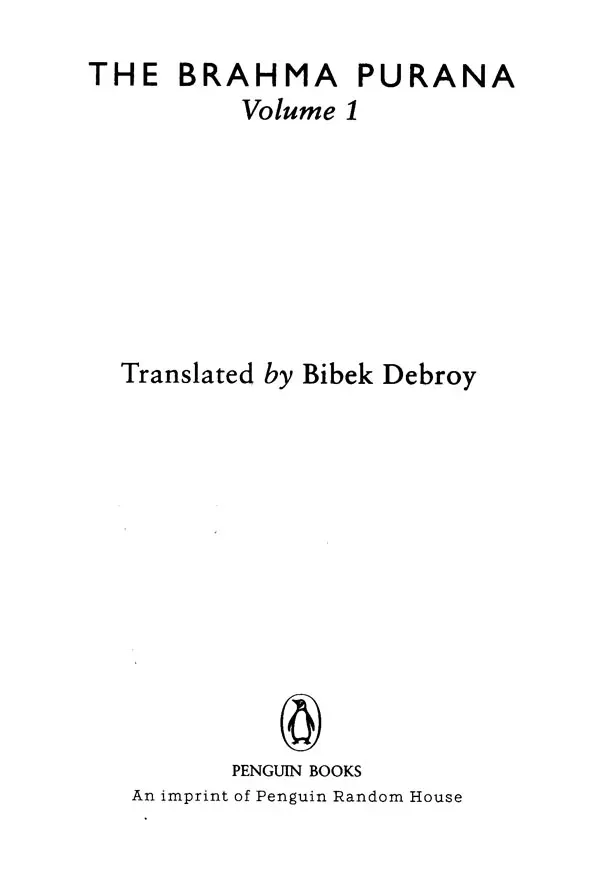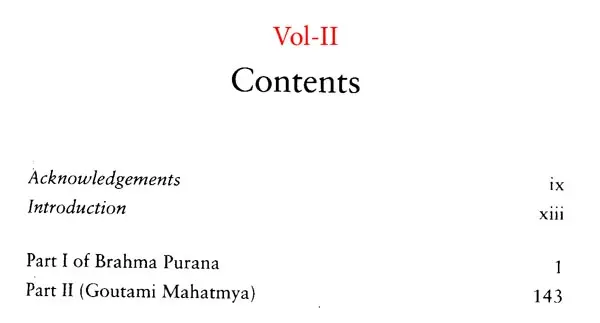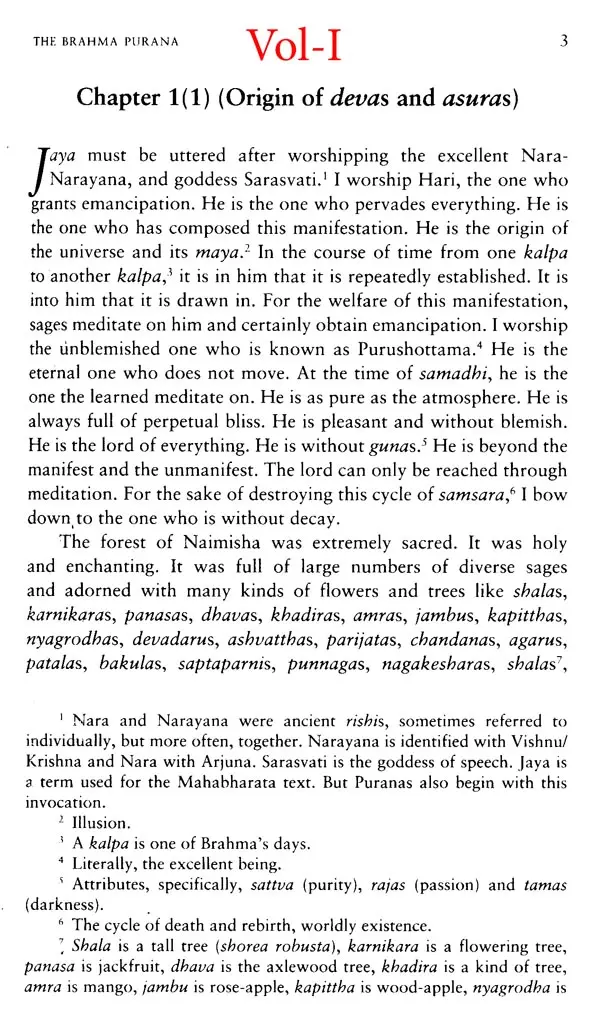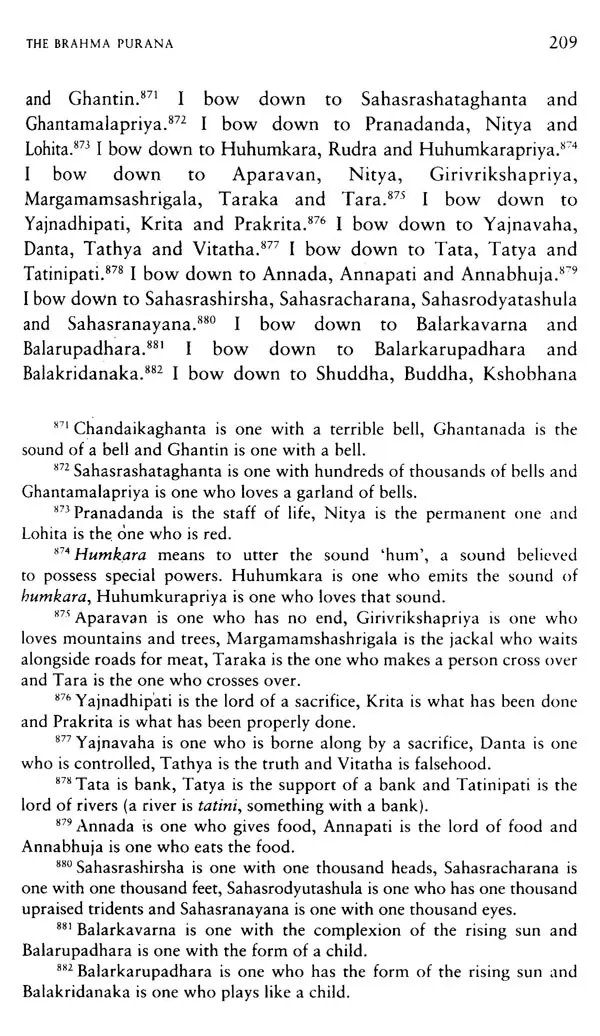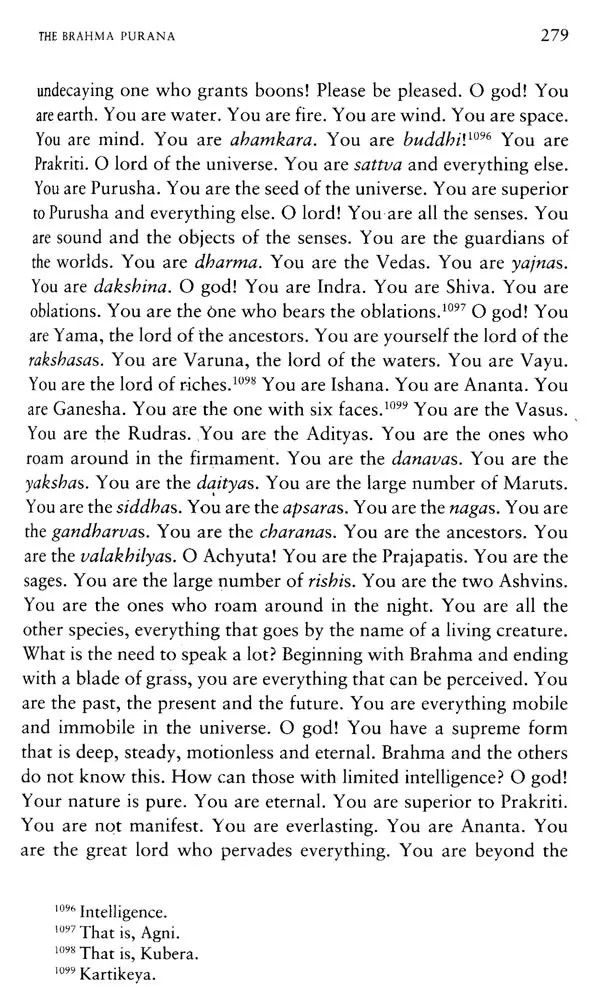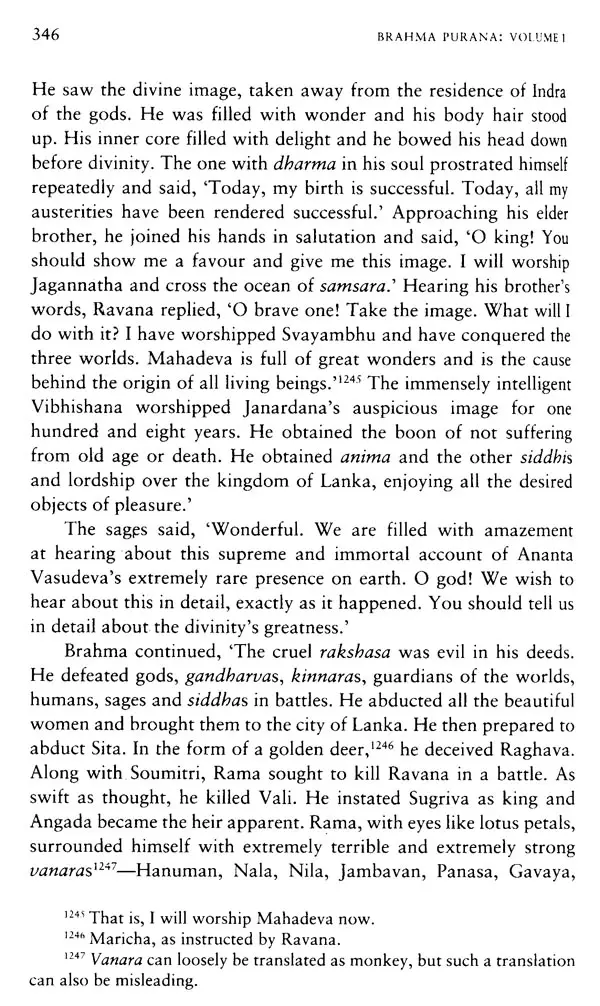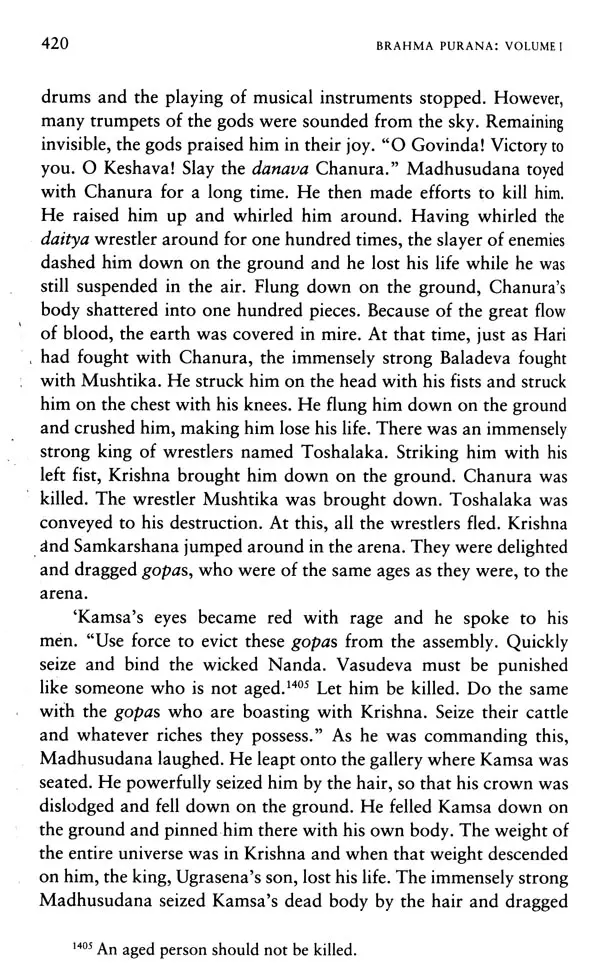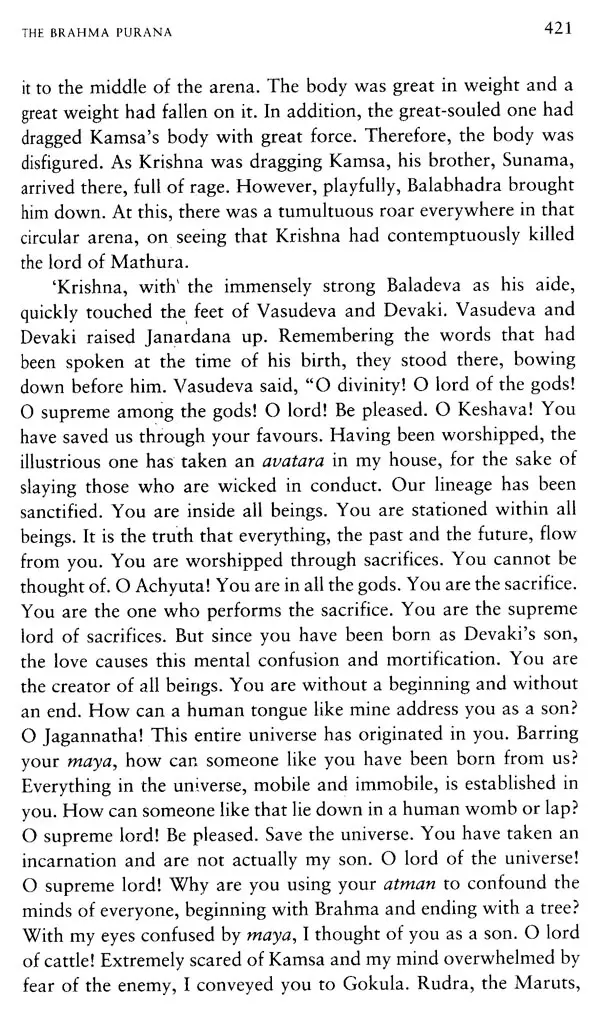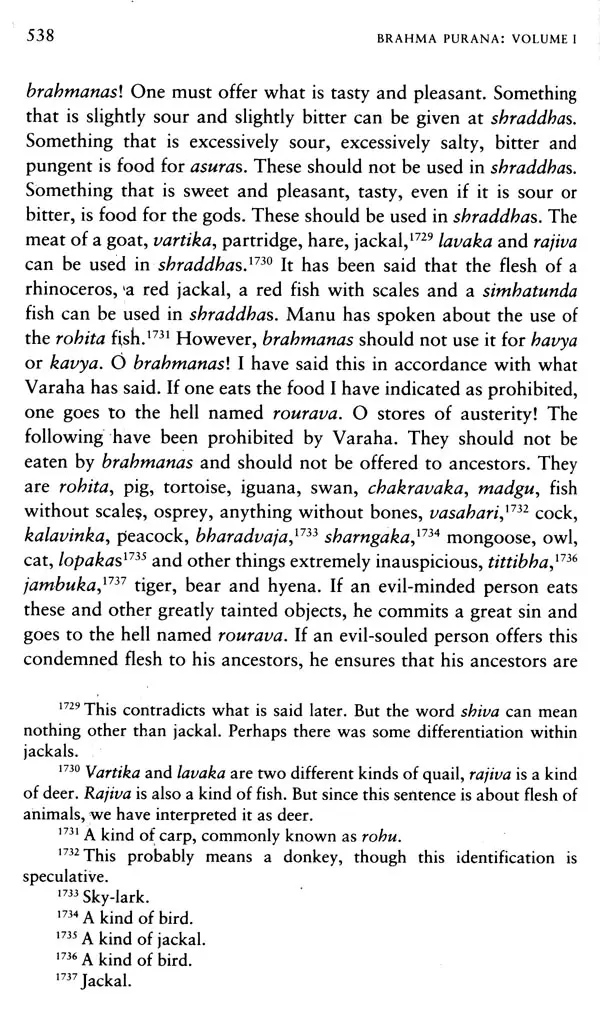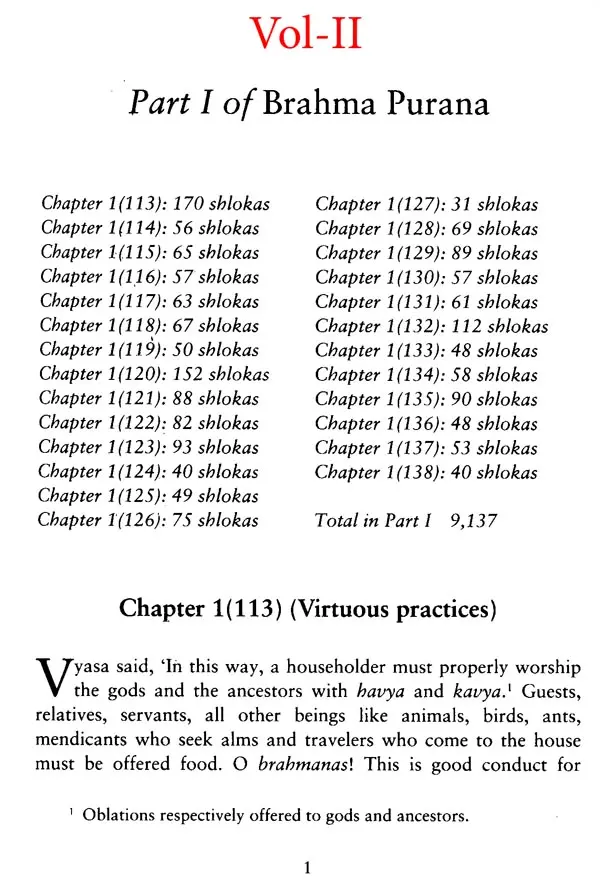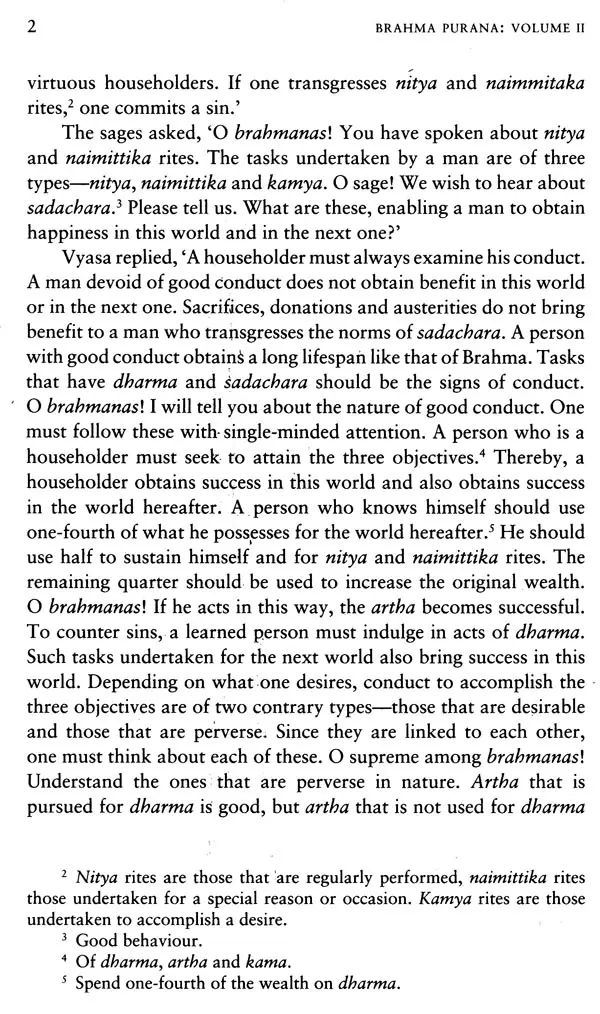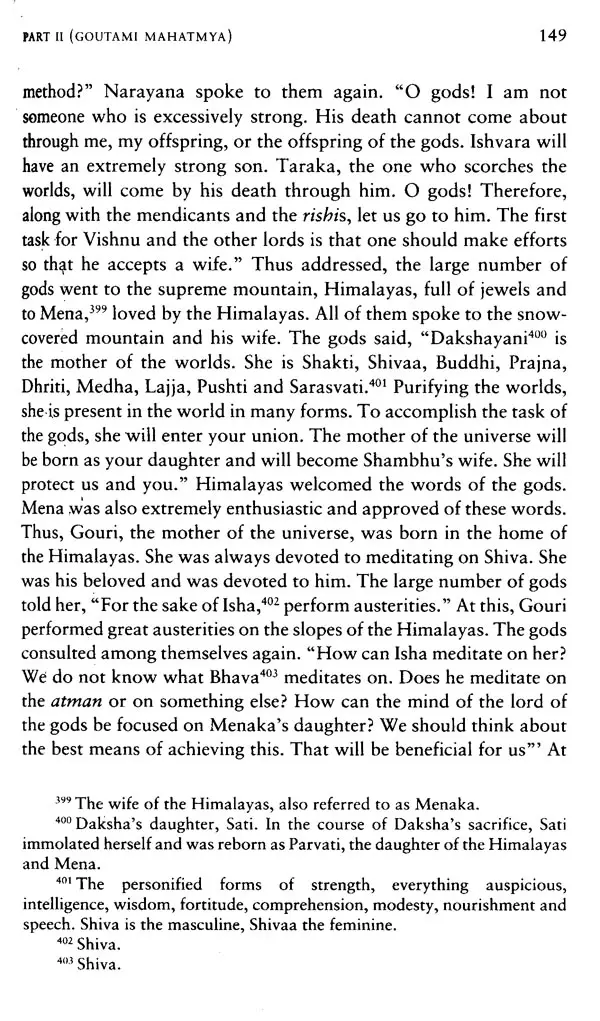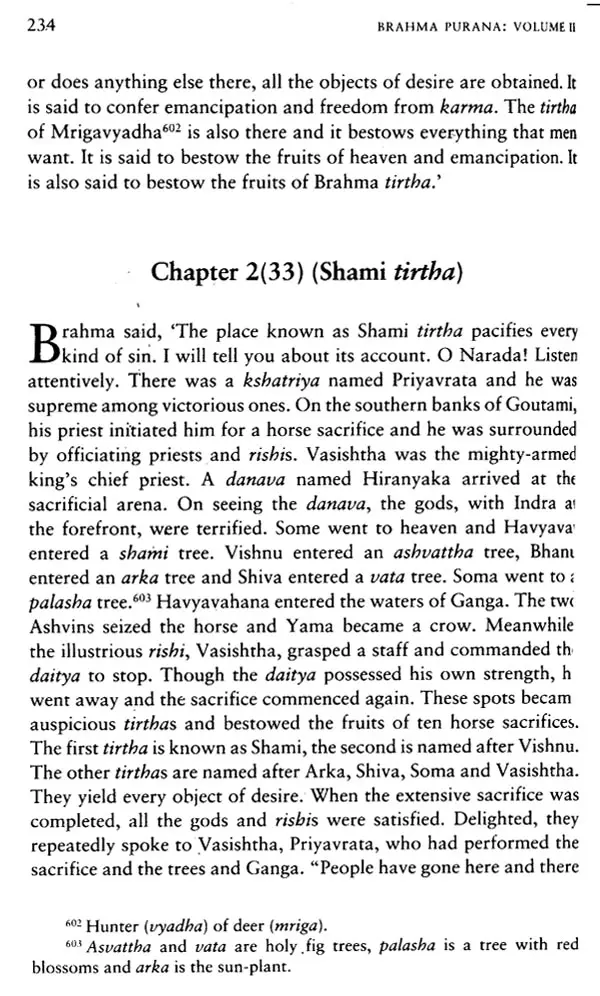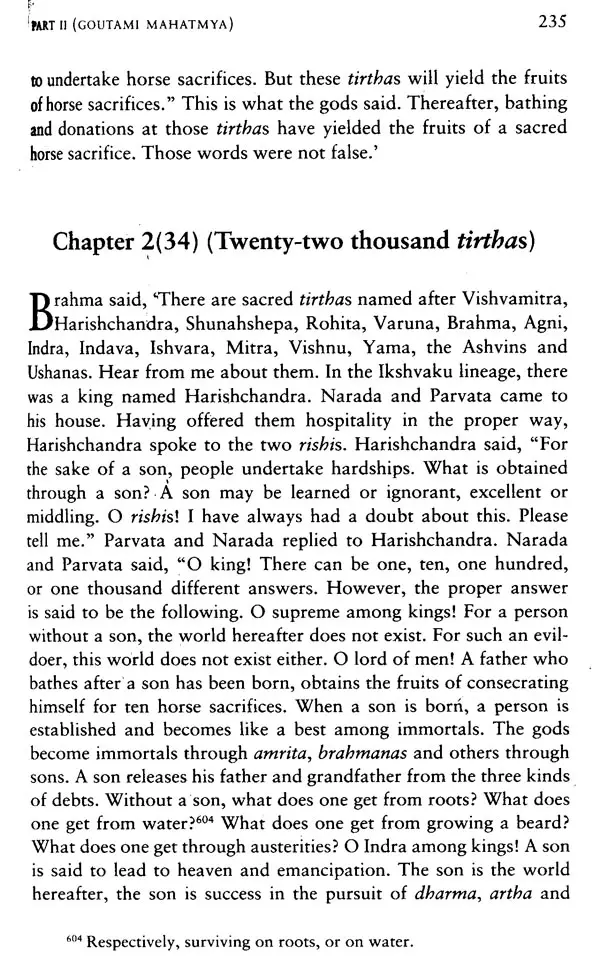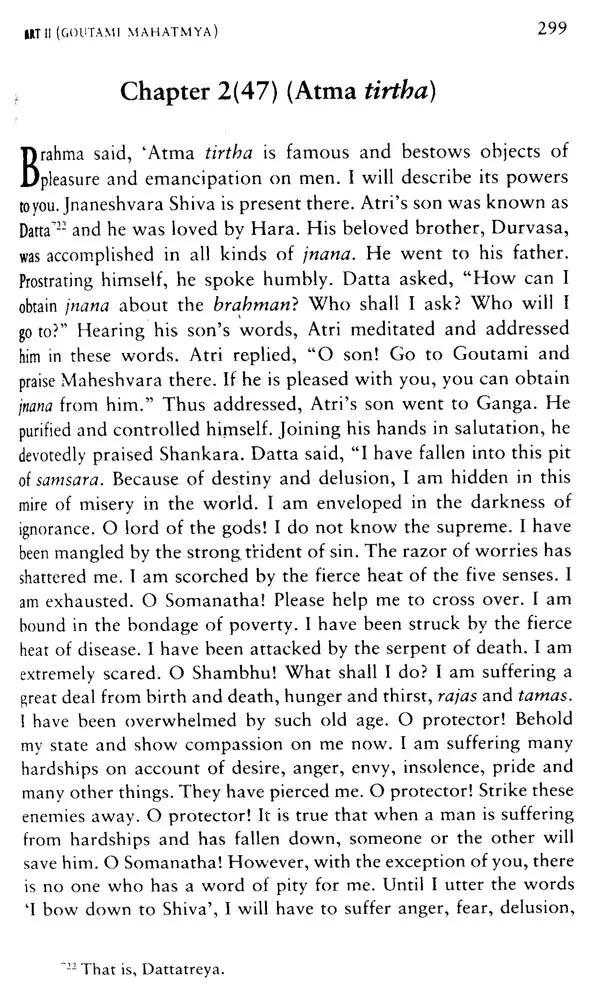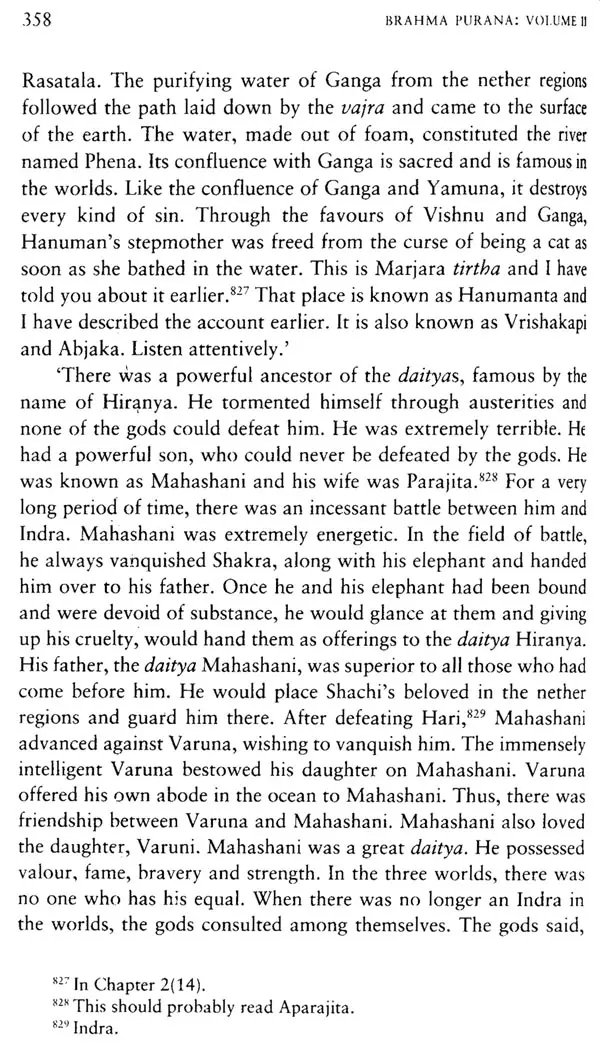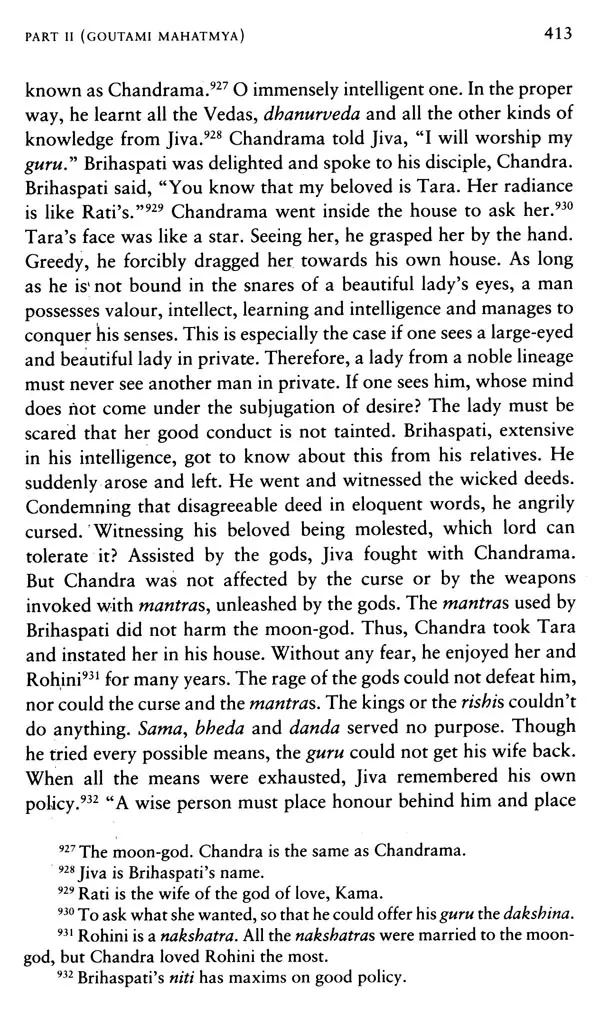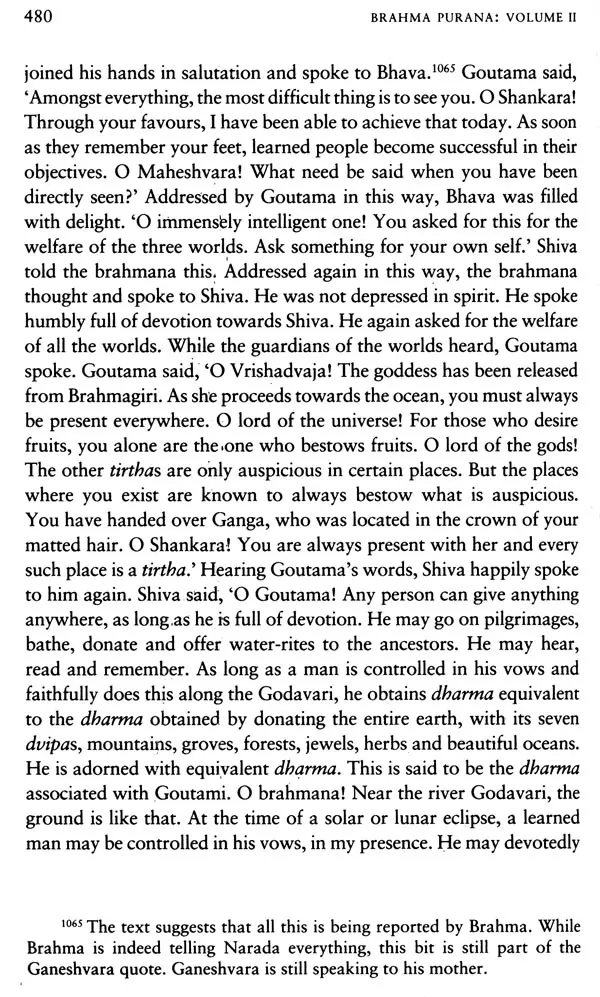
The Brahma Purana: Complete English Translation (Set of 2 Volumes)
Book Specification
| Item Code: | UAE927 |
| Author: | Bibek Debroy |
| Publisher: | Penguin Random House India Pvt. Ltd. |
| Language: | English |
| Edition: | 2021 |
| ISBN: | Vol-I: 9780143454892 Vol-II: 9780143454908 |
| Pages: | 1060 |
| Cover: | PAPERBACK |
| Other Details | 8.00 X 5.00 inch |
| Weight | 760 gm |
Book Description
Reading almost like a travel guide, it celebrates temples and sites related to Vishnu, Shiva and Devi as it focuses on places like modern-day Odisha and Rajasthan.
Brimming with insight and told with clarity, this luminous text is a celebration of a complex mythological universe populated with gods and mortals, providing readers with .111 opportunities to truly understand Indian philosophy.
But that's not relevant for our purposes. In the Chandogya Upanishad, there is an instance of the sage Narada approaching the sage Sanatkumara for instruction. Asked about what he already knows, Narada says he knows Itihasa and Purana, the Fifth Veda.' In other words, Itihasa-Purana possessed an elevated status. This by no means implies that the word Purana, as used in these two Upanishads and other texts too, is to be understood in the sense of the word being applied to a set of texts known as the Puranas today.
The Valmiki, Ramayana is believed to have been composed by Valmiki and the Mahabharata by Krishna Dvaipayana Vedavyasa.
After composing the Mahabharata, Krishna Dvaipayana Vedavyasa is believed to have composed the Puranas. The use of the word composed immediately indicates that Itihasa-Purana are 'smriti' texts, with a human origin. They are not 'shruti' texts, with a divine origin. Composition does not mean these texts were rendered into writing. Instead, there was a process of oral transmission, with inevitable noise in the transmission and distribution process.
Writing came much later.
Pargiter's book on the Puranas is still one of the best introductions to this corpus.' To explain the composition and transmission process, one can do no better than to quote him. 'The Vayu and Padma Puranas tell us how ancient genealogies, tales and ballads were preserved, namely, by the sutas.' and they describe the suta's duty ... ' The Vayu, Brahmanda and Visnu give an account on how the original Purana came into existence. Those three Puranas say: Krishna Dvaipayana divided the single Veda into four and arranged them, and so was called Vyasa. He entrusted them to his four disciples, one to each, namely Paila, Vaisampayana, Jaimini and Sumantu. Then with tales, anecdotes, songs and lore that had come down'.
Book's Contents and Sample Pages
